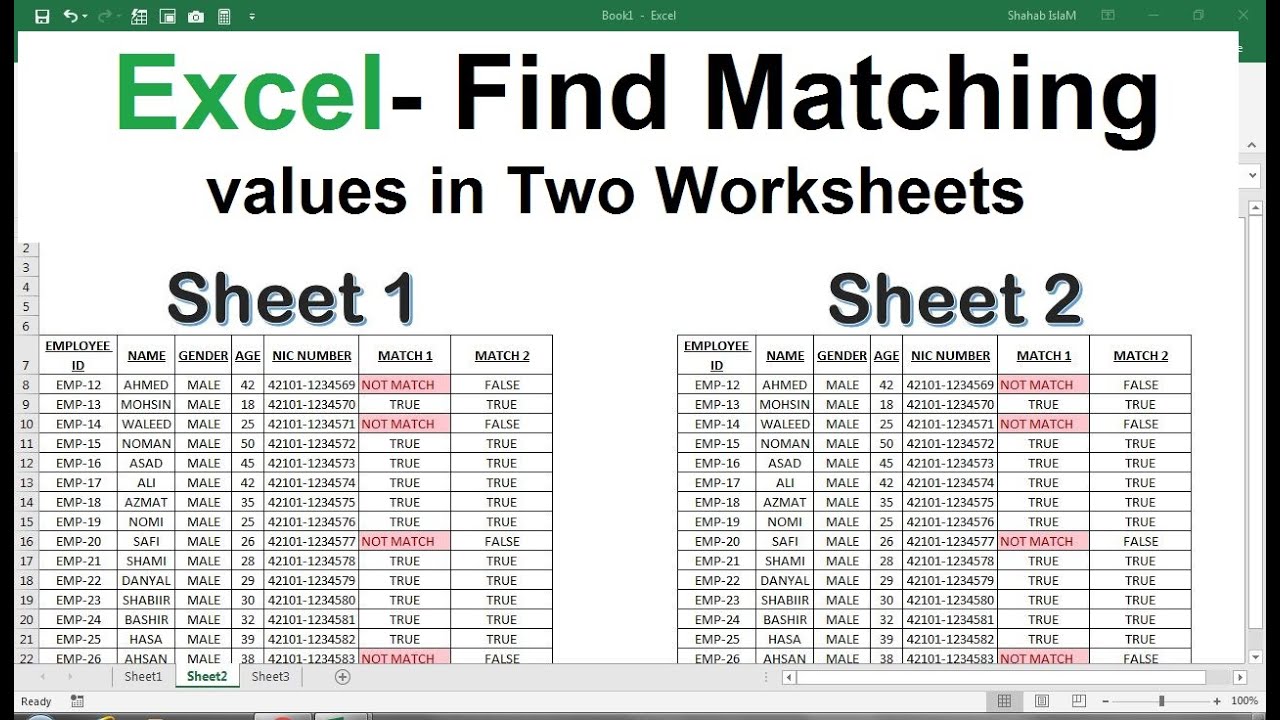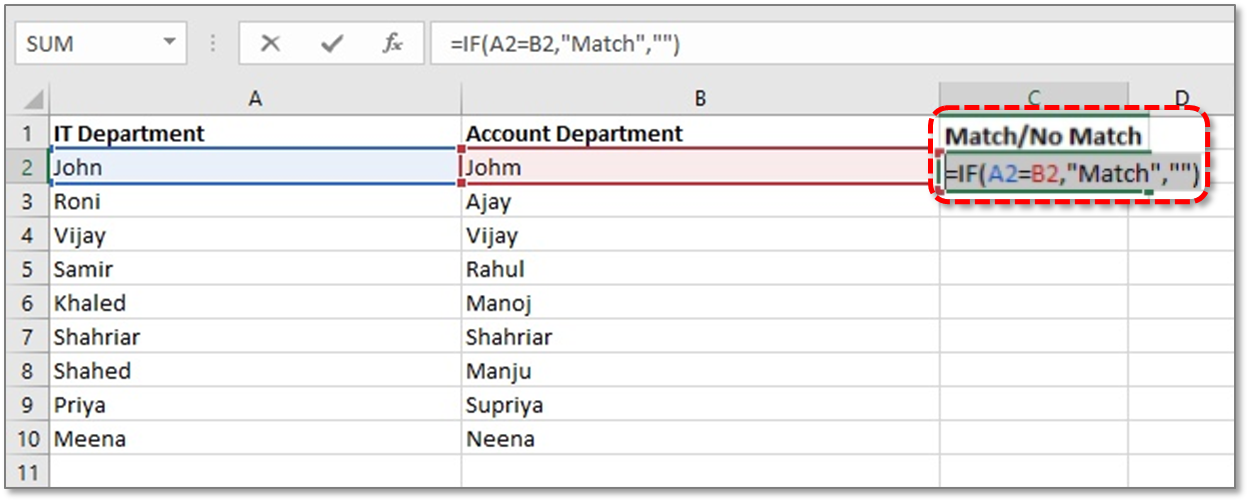Excel Match Magic: Compare Sheets Instantly

When working with large datasets, a common challenge in Excel is comparing data across multiple sheets for accuracy, updates, or discrepancies. This could involve anything from tracking sales performance over time, reconciling financial statements, or managing inventory across different locations. Here, we'll explore techniques to compare Excel sheets instantly, offering a magical solution to what can often be a mundane and time-consuming task.
Why Compare Excel Sheets?

- Data Integrity: Ensuring data accuracy across sheets.
- Efficiency: Reducing the time spent manually cross-checking data.
- Analysis: Performing trend analysis or spotting anomalies in datasets over time.
- Collaboration: Aligning data from multiple team members or departments.
Using Excel’s Built-In Features

Excel offers several built-in tools that can facilitate sheet comparison with minimal setup:
- VLOOKUP & HLOOKUP: Look up values in a column or row and return corresponding values from another sheet.
- INDEX MATCH: A more powerful alternative to VLOOKUP with increased flexibility.
- Conditional Formatting: Highlight cells based on conditions, such as cells not matching a value from another sheet.
Here’s how to utilize INDEX MATCH for a quick comparison:
- Select a cell in your comparison sheet.
- Enter the formula:
=INDEX([SourceSheetName]![RangeToReturn], MATCH(A2, [SourceSheetName]![LookupRange], 0)) - Replace “[SourceSheetName]” with the name of your source sheet, and “[RangeToReturn]” and “[LookupRange]” with the appropriate cell ranges.
✨ Note: Ensure your source sheet columns and comparison sheet columns align correctly.
Advanced Techniques

Using Power Query

Power Query, available in Excel since 2013, can transform your data comparison tasks:
- Combine data from multiple sheets using Power Query’s merge feature.
- Automatically synchronize data with external sources or databases.
- Create custom queries for complex data comparisons.
Scripting with VBA

For custom solutions or when dealing with sheets from different workbooks, VBA can be incredibly powerful:
- Automate the comparison of sheets using macros.
- Create user interfaces for selecting sheets to compare.
- Output results to new sheets or prompt users with messages.
👀 Note: VBA is suitable for complex comparisons and should be used by those comfortable with coding or willing to learn.
Using Add-ins

For those not inclined to dive into coding, Excel add-ins can offer instant comparison capabilities:
- Spreadsheet Compare: A Microsoft tool for detailed sheet comparison.
- XL Comparator: An add-in focused on merging and comparing Excel files.
- Ablebits Compare Sheets: Allows for easy sheet comparison, highlighting differences and merging data.
| Tool | Description | Best For |
|---|---|---|
| Spreadsheet Compare | Microsoft's comparison tool for Excel. | Detailed analysis of workbook structures and content. |
| XL Comparator | An add-in to compare and merge Excel files. | Quick comparisons and merging of multiple spreadsheets. |
| Ablebits Compare Sheets | Comparison and synchronization of data in Excel. | Complex comparisons across multiple sheets and workbooks. |

Summing Up Key Insights

Comparing Excel sheets efficiently involves understanding the tools at your disposal. Whether you’re using built-in features like INDEX MATCH, diving into Power Query or VBA, or leveraging specialized add-ins, there’s a solution tailored to your needs. Choosing the right approach depends on the size of your datasets, the frequency of comparisons, and your familiarity with Excel’s advanced features.
Can I compare data from different Excel workbooks?

+
Yes, using VBA or Excel’s built-in features like Power Query or add-ins like Spreadsheet Compare, you can easily compare data across different workbooks.
How do I handle errors when comparing sheets?

+
Excel’s functions like IFERROR can help manage errors, or you can use VBA to deal with discrepancies systematically.
Can I automate this process for future updates?

+
VBA or Power Query allows for automated updates, reducing manual intervention.